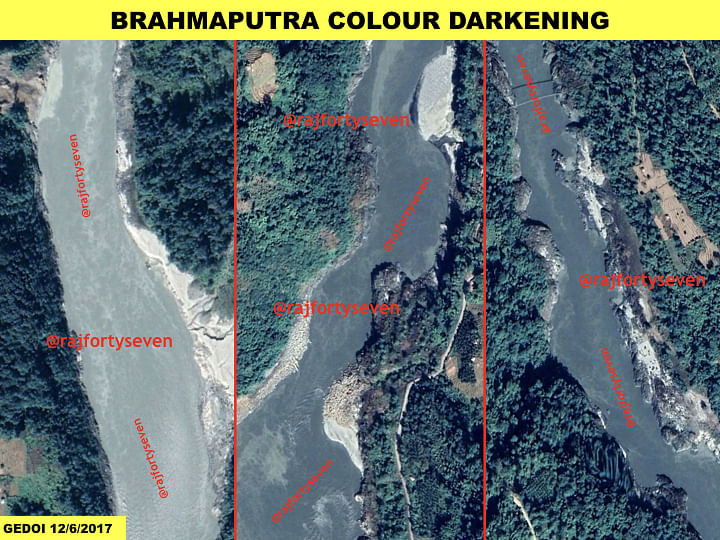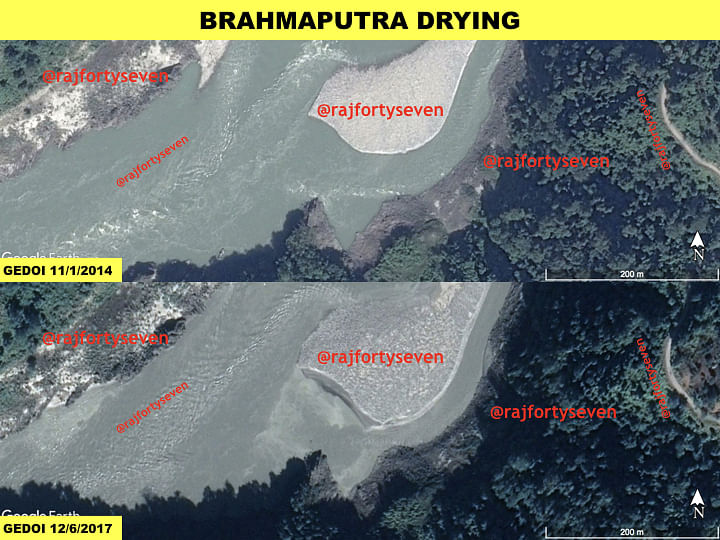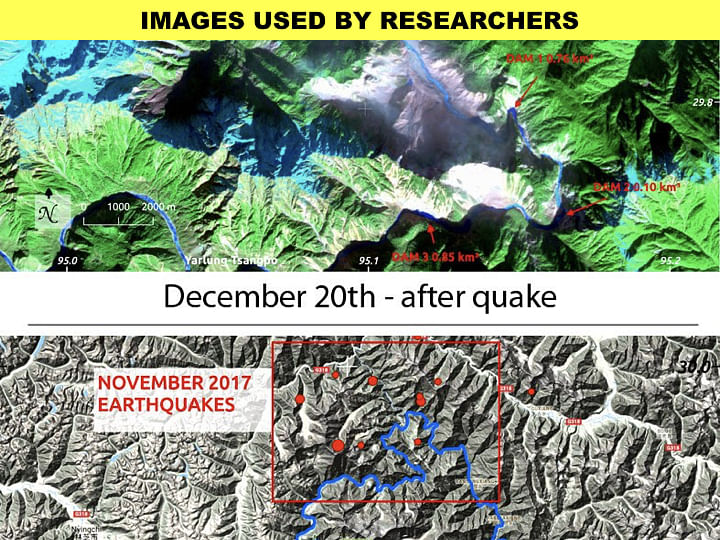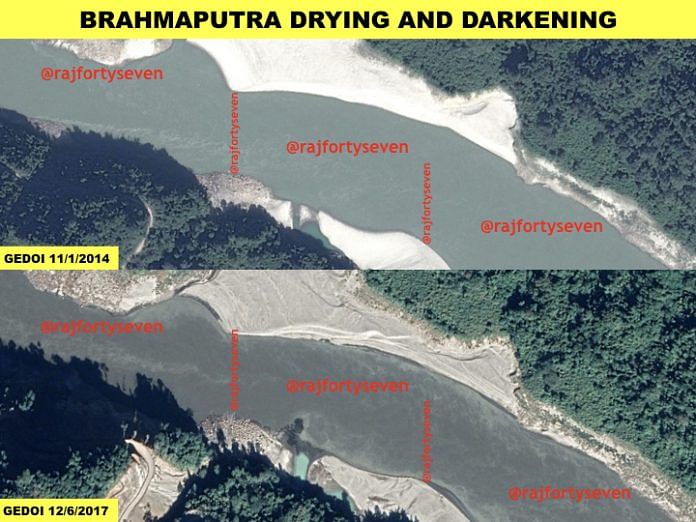China had blamed the Brahmaputra pollution on earthquake last month. However, latest satellite images suggest that this explanation might be humbug.
China has claimed that the water of the Brahmaputra has turned dark because of an earthquake in the Tibet region last month. But that may not hold water going by latest satellite images.
An analysis of the images suggests that the construction of dams on the river could be the real culprit. The images show that the width of the river has reduced considerably in Tibet, an indication of dam construction activities on the Chinese side.
The earthquake cited by Beijing occurred in Nyingchi district of Tibet in mid-November. The turbidity, even if caused by these earthquakes, would not have lasted more than a week or a maximum of a fortnight, considering about seven days of time for water flow from an earthquake zone to the Indian areas of Tuting (Arunachal) and further south.
India needs to pursue China diplomatically to share data or to permit its Snow and Avalanche Studies Establishment (SASE) scientists to visit the area and study this unprecedented phenomenon.
Dark waters
The waters in earthquake-hit rivers become brown and not black as explained by the Chinese side.
The colour of the Brahmaputra is becoming darker as it is flowing south. The colour was analysed at three different locations on the same day — 6 December.

The satellite images of 1 November 2014 and 6 December 2017 clearly show that width of the river has reduced 10-12 m when compared to older images at two locations.
The construction of dams on Brahmaputra in Tibet, especially the one before the Tsangmo Dam, is the only possible explanation for this phenomenon.

Rumours about natural dams
There were some rumours doing the rounds that three natural dams have formed over the Brahmaputra in Nyingchi district over a distance of 12 km. These natural dams have formed reservoirs of varying lengths, across an area of 6 km, according to two Indian researchers’ preliminary analysis.
The report was obviously picked up by the Chinese government-controlled media for their own convenience. The same information was later used by the Indian media as well.
There many inconsistencies in the preliminary analysis.
Size of dams: The size quoted is 0.76 sq km + 0.1 sq km + 0.85 sq km = 1.71 sq km. The width of the river measured on Google Earth at Dam sites #1 and #2 is an average 40 m and at Dam site #3 is 110 m.
Considering these, the reservoir should be at least 17-18 km in length at dam site #1 & #2 and 8 km at dam site #3. The report, however, cites only 6 km, which is incorrect.
Dammed water
The amount of water at these three locations is supposedly 1 billion cubic metres. The figure, however, cannot be substantiated by any available facts.
Considering the width of the river (probably wrongly assessed by the researchers) as 100 m, and the length of reservoirs as 6 km, a collection of 1 billion cubic metres would require a depth of 1666.6 metre, which is not possible.

Wrong dates
The report claims that blue water was sighted in satellite images of 10 December 2017 and turbidity was noticed the first time on 20 December.
In reality, the turbidity had been noticed in the river since the first week of December, a simple Google search could have revealed that.
The satellite images of 6 December clearly show the black waters in Brahmaputra.
Colonel Vinayak Bhat (retd) is a Military Intelligence veteran of the Indian Army with vast experience of satellite imagery analysis. He has worked as a Chinese interpreter and is a specialist on PLA and Pakistan’s armed forces. He tweets @rajfortyseven



